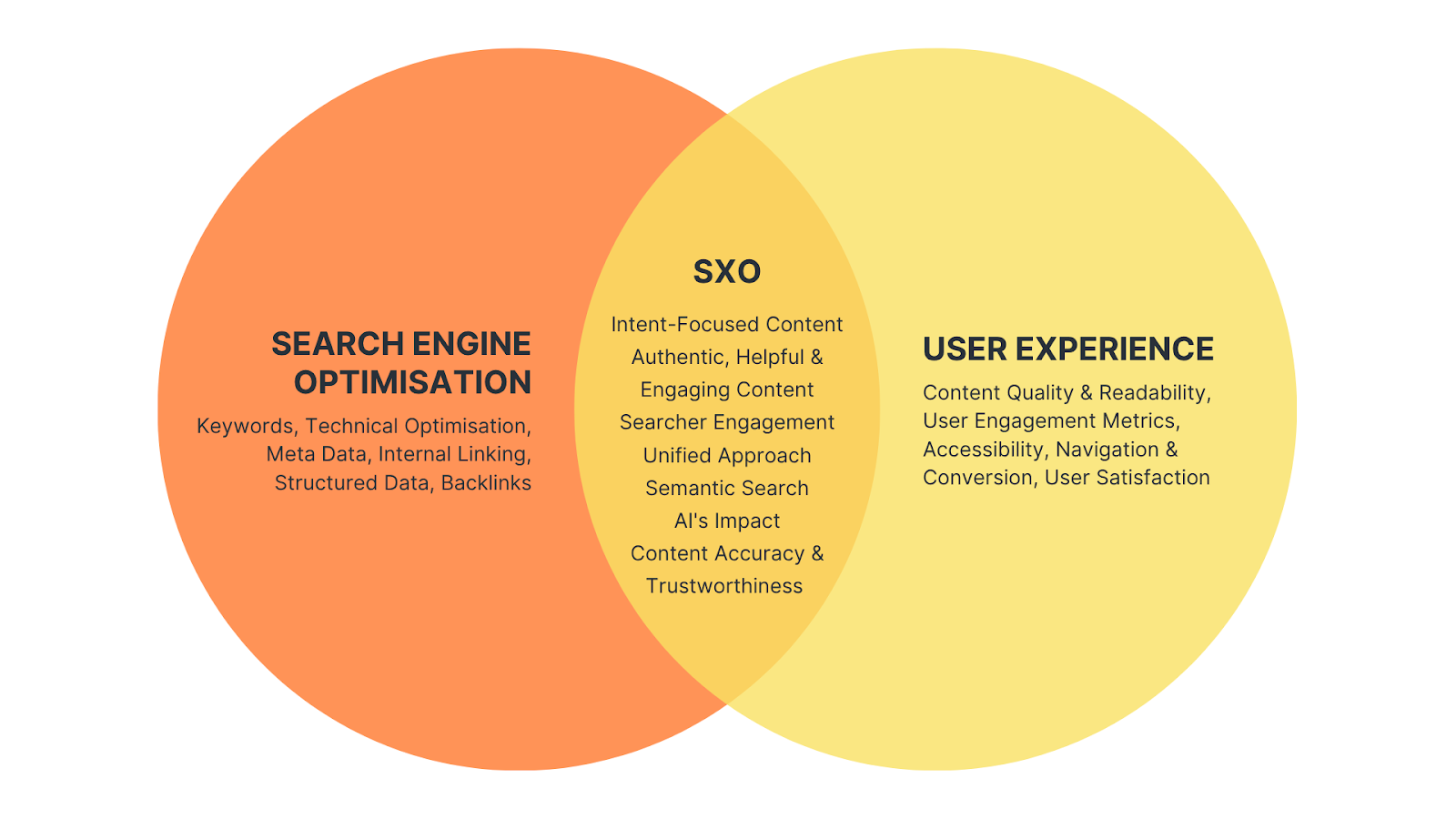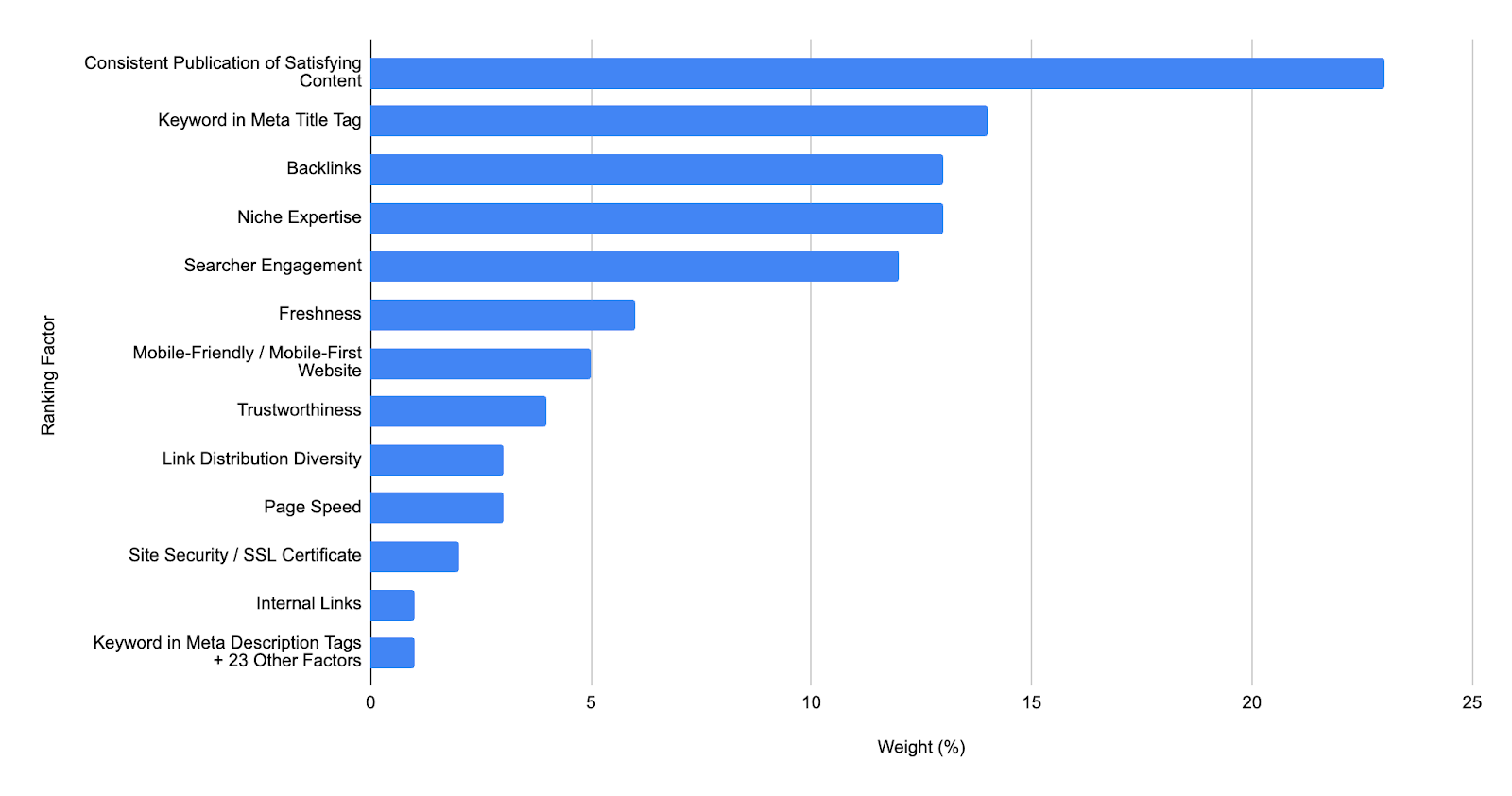
Rethinking On-Page SEO: How UX Will Redefine Search Success
Published July 31, 2025
Welcome and thank you to Calum Whittingham, Organic Search Consultant at Hallam, who shares his insights and predictions for the future of on-page SEO.
For years, on-page SEO has had a somewhat standardised approach to optimising content to improve how that content is not only presented but also found. Strategic keyword placement, internal linking, meta data, title tags, schema markup… they’re all important aspects of on-page SEO that we’ve seen before and likely implemented countless times.
Now, without question, these are all still significant and are in no way being made redundant, but I do want to pose some questions: ‘How is on-page SEO changing? Do we need to adapt? Will adapting work?’
We can answer some of these more confidently than others. It’s safe to say we do need to adapt, much like in any area of search optimisation, whether on-page, off-page, technical etc. And of course we know how much of an impact LLMs and AI are having, and I’m purposefully going to avoid indulging in this, because it’s been covered, well, a lot.
The bottom line is that theorising and experimentation has become an integral part of search, as we look to explore what works, what doesn’t and not least answer the plethora of questions beginning with ‘why?’.
Contents:
The SEO and UX Overlap

The sheer amount of change has meant we need to start rethinking our approach to optimising our content.
The rise of malpractice via the exploitation of generative AI to deploy countless new pages and pieces of content in the hope of some finding organic success is apparent. It’s more important than ever before to create authentic, helpful and engaging content, with user experience (UX) right at its foundation.
UX is now a major factor in how our content ranks, as search algorithms continue to put users first. For years, a somewhat artificial divide existed between SEO and UX, where we then saw the concept of ‘Search Experience Optimisation’ (SXO) begin to gain traction.
Combining SEO and UX, SXO was coined as a way of optimising web content in a way that considers both traditional SEO techniques and also putting user experience first.
It’s a term that is yet to reach the widespread recognition of SEO or UX, but with the changes we’re seeing to search, it is perfectly conceivable that at least the idea of SXO will become a core theme in on-page SEO, or perhaps ‘on-page SXO’.

Growing Influence of UX
Google's sustained emphasis on user-centric metrics offers compelling evidence of the deepening connection between UX and rankings. We know that Core Web Vitals are a ranking factor that is directly tied to UX, playing an important role in technical SEO for many years.
But the reality is that we’re moving past this; in Google’s March 2025 Core Update, the ranking factor ‘Searcher Engagement’ was found to become even more significant.

Searcher Engagement is now thought to be the 5th most important ranking factor, up 12% (2nd only to Consistent Publication of Satisfying Content), according to First Page Sage’s 2025 Google Ranking Factors Report.
Searcher Engagement uses metrics such as bounce rate, time spent on page and even interactions like scrolling, clicking on internal links, or using interactive elements on the page to gauge Searcher Engagement. It’s essentially a way to consider how users are engaging with a page and therefore reflects heavily on UX.
Ultimately, it implies whether a user finds what they need and doesn't return to the search results for the same query.
So are we moving towards a model where user satisfaction and experience is the ultimate ranking factor, and if so, when will we truly arrive?
Of course, definitively measuring "user satisfaction" at scale presents considerable challenges, but the direction of travel seems clear. This is why optimising content from an SEO perspective will now need to have UX considerations embedded deeply.
Profound Impact of AI Search
Ahref’s AI Traffic Study revealed that over 63% of websites are seeing traffic from AI platforms, which highlights how much of an impact its had in a relatively short period of time. Optimising for LLMs and AI answer engines is the hot topic in the SEO world right now, and one that still has so much uncertainty. It’s undoubtedly an exciting time, as we seek out the answers and processes that could lead to organic success on a semi-reliable basis, but there’s still a lot to uncover.
In fact, the rise of AI search has been a key catalyst in this UX-driven evolution of search.
Sophisticated LLMs are enabling search engines to move beyond simple keyword matching towards a more context-aware, intent-focused approach, often referred to as semantic search. The emphasis is shifting towards optimising for comprehensive and natural answers that directly address the user's intent, and therefore providing the best possible user experience.
In its official announcement of AI Mode in Search, Google introduced a more sophisticated approach to understanding user intent and satisfaction. The basic principle is users no longer have to ‘search’ for their answer by exploring various SERP results, but instead having the answer provided to them directly and personally.
AI models can analyse complex user interaction sequences, understanding not just what users click on but how they navigate through search results and subsequent pages. We’re now in a space where subtle indicators of user satisfaction are possible, such as the quality of user engagement with AI-generated content summaries and the effectiveness of different content formats in meeting user needs.
The Case for a Unified Approach
Now more than ever there is truly a business case for a fully unified approach to on-page SEO and UX; they shouldn’t be seen as separate entities. It’s easy to get carried away with traditional on-page SEO techniques but we really need to consider how that content is being viewed and consumed; what it's telling the user, how the user will perceive it, the journey the user will either begin or continue.
Lets look at keyword research and keyword optimisation as an example. It’s been an integral part of on-page SEO for many years, but is it going to stay that way?
Perhaps we’ll see a shift away from targeting specific keywords to instead focusing on the semantics themselves and the experience a user will have when engaging with the content. How useful is it? Is the information clear? Does it answer the questions clearly? No fluff involving the placement of target keywords—just giving the users what they want and providing the best experience possible.
By aligning SEO and UX, businesses can create better alignment with user journeys, and the potential benefits of a unified approach are compelling.
Understanding user intent through SEO research can directly inform information architecture and website design in UX, leading to more intuitive navigation and a smoother path to conversion. SXO (Search Experience Optimisation) has been coined to represent the unification of SEO and UX, but in the current era of search and a strong tendency for new terms being coined (yep, I’m referring to the likes of GEO, AIO, AEO etc.), I’m not yet convinced SXO should be presented as a major new terminology, or certainly not a replacement, for SEO.
Okay so enough of diving into the naming conventions, lets look at the principles and how on-page SEO techniques are integrated with UX. It’s important to do so, as blending the often data-driven world of SEO with the human-centered design principles of UX can present cultural and practical hurdles. SEO professionals might be more accustomed to focusing on quantifiable metrics, while UX designers prioritise qualitative user feedback.
Comparing SEO vs UX principles
The table below lists the traditional on-page SEO areas we’d consider best practice, and how UX fits within these:
Optimisation Area | Checklist Item | Primarily UX | Primarily SEO | Strong Overlap |
|---|---|---|---|---|
Keywords | Identify the primary keyword(s) the page aims to rank for. |
| ||
Understand the search intent behind those keywords. |
| |||
Research related and long-tail keywords. |
| |||
Naturally incorporate target keywords in key on-page elements. |
| |||
Avoid keyword stuffing – focus on readability and user experience. |
|
| ||
Create high-quality, original, and in-depth content that fully addresses user intent. |
|
| ||
Content | Content is accurate, trustworthy, and up-to-date. |
|
| |
Use clear, concise language that is easy for users to understand. |
| |||
Break up large blocks of text with headings, bullet points, and visuals. |
| |||
Use synonyms and related terms to enrich the content. |
| |||
Meta Data & Structure | Write concise and engaging title tags with primary keywords. |
|
| |
Craft informative and compelling meta descriptions. |
|
| ||
Title tags and meta descriptions accurately reflect content. |
|
| ||
Use headings (H1-H6) to structure content logically. |
|
| ||
Include relevant keywords naturally in headings. |
| |||
Use only one H1 tag per page for the main title. |
| |||
Use descriptive file names for images. |
| |||
Add relevant alt text to images for accessibility and SEO. |
|
|
| |
Optimise image sizes to reduce page load time. |
|
| ||
Consider using videos and other multimedia to enhance user engagement. |
| |||
Include clear and concise Calls to Action (CTAs). |
| |||
Make CTAs visually prominent and easy to click/tap. |
| |||
The website is accessible to users with disabilities. |
|
Open Questions and Path Forward
What's becoming clearer by the day is that the future of optimising on-page content isn't just about ticking off boxes; it's about creating a truly fantastic experience for people viewing the content.
With AI getting smarter at understanding what users really want, it's no longer enough for your content to simply show up in search results. It needs to genuinely satisfy and engage anyone who lands on your page, right from the get-go.
When your SEO and UX teams (or even just your mindset!) start working hand-in-hand, you can make sure every piece of content, every page element, and every user's journey is designed not just for search engines, but primarily for the human being interacting with it.
So, how do we get there? It starts with curiosity, not just keywords or rankings, but about the people actually landing on your page. Who are they? What are they really trying to accomplish? And are we genuinely helping them do that, or are we still writing content that’s more for search engines than for users?
To create truly effective content, we need to ask ourselves whether we’re clearly solving the user's problem and how we know that to be true. Have we tested different formats or layouts to see what actually resonates? Are there parts of the journey where users drop off, get stuck, or miss what they need?
And none of this is static… Do we have space to learn from user behaviour and adapt over time? Do we revisit these questions regularly, not just at launch, but as part of how we continue to optimise and grow?
These are the kinds of questions that deserve a central place in how we think about content, and not just to improve performance, but to better serve people engaging with it.

After graduating from University of Nottingham, Calum worked as a Digital Marketing Specialist with a small B2B agency before joining Hallam in 2024. Calum specialises in driving organic growth by blending traditional SEO techniques with emerging strategies tailored for LLMs. With a background in content, Calum understands how both content and SEO can be best utilised together in order to form organic strategies and boost search visibility.
Articles for every stage in your SEO journey. Jump on board.
Related Articles
 How to Stay Relevant in a World of AI Overviews & Query-Fans
How to Stay Relevant in a World of AI Overviews & Query-Fans
 Auditing Core Web Vitals with Chrome DevTools MCP
Auditing Core Web Vitals with Chrome DevTools MCP
 Content Refresh Guide: How to Improve Your Search & AI Visibility
Content Refresh Guide: How to Improve Your Search & AI Visibility
 Sitebulb Desktop
Sitebulb Desktop
Find, fix and communicate technical issues with easy visuals, in-depth insights, & prioritized recommendations across 300+ SEO issues.
- Ideal for SEO professionals, consultants & marketing agencies.
Try our fully featured 14 day trial. No credit card required.
Try Sitebulb for free Sitebulb Cloud
Sitebulb Cloud
Get all the capability of Sitebulb Desktop, accessible via your web browser. Crawl at scale without project, crawl credit, or machine limits.
- Perfect for collaboration, remote teams & extreme scale.
If you’re using another cloud crawler, you will definitely save money with Sitebulb.
Explore Sitebulb Cloud Calum Whittingham
Calum Whittingham



